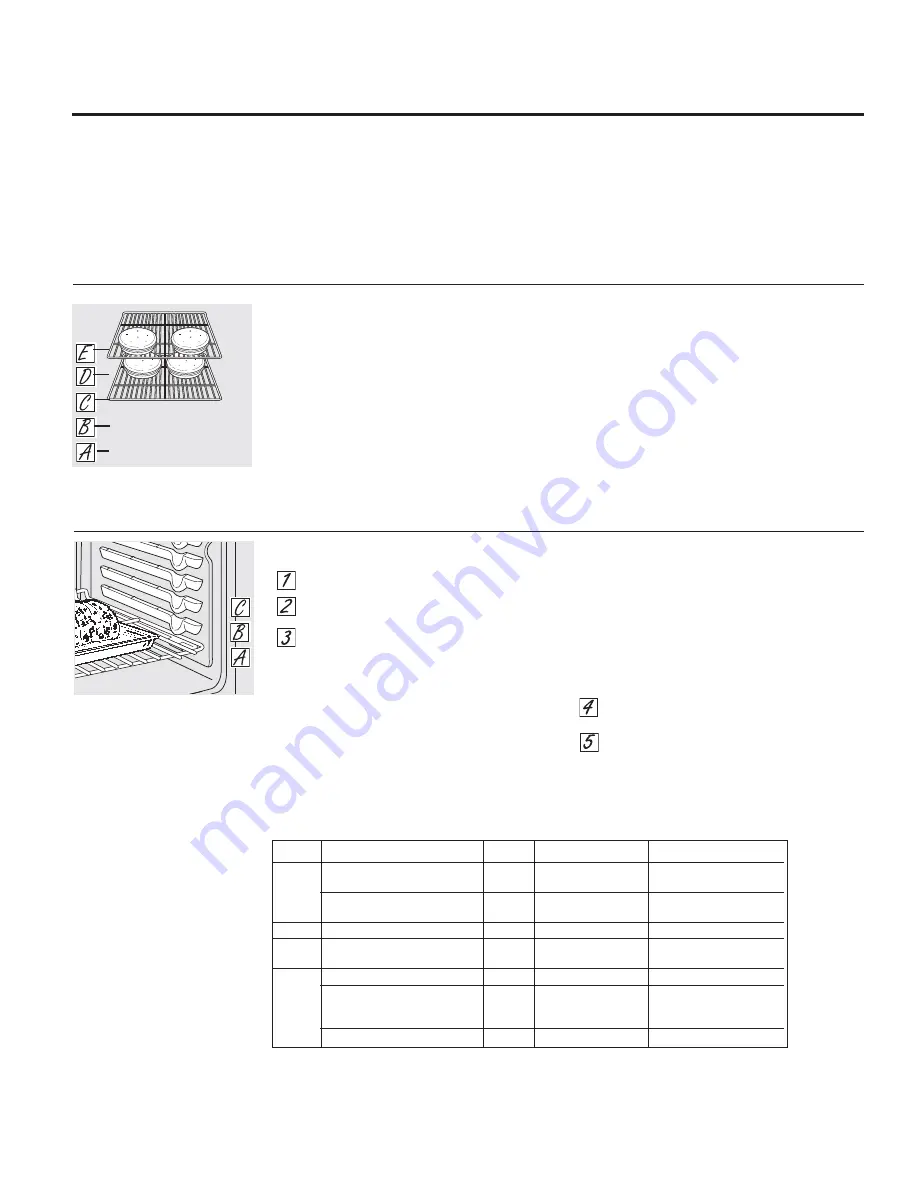
13
GEAppliances.com
How to Set the Oven for Baking or Roasting
Touch the
BAKE
pad.
Touch the number pads until the desired
temperature is displayed.
Touch the
START
pad.
The oven will start automatically. The display will
show the changing temperature starting at 100
Û
F.
(The temperature display will start to change once
the oven temperature reaches 100
Û
F.) When the
oven reaches the selected temperature, the oven
control will beep several times and the display will
show the oven temperature.
NOTE:
You may hear the convection fan (on
some models) while the oven is preheating. The
fan will stop after the oven is preheated and
the display shows your set temperature. This is
normal.
To change the oven temperature during the
BAKE
cycle, touch the
BAKE
pad and then the number
pads to get the new temperature.
Check food for doneness at the minimum time
on the recipe. Cook longer if necessary.
Touch the
CLEAR/OFF
pad when baking is
finished, and then remove the food from the
oven.
Preheating and Pan Placement
To avoid possible burns, place the racks
in the desired position before you turn on the
oven.
Preheat the oven if the recipe calls for it. Preheating
is necessary for good results when baking cakes,
cookies, pastries and breads.
If baking four cake layers at the same time, place
two layers on rack C and two layers on rack E.
Stagger pans on the rack so one is not directly
above the other.
Baking results will be better if food is centered in
the oven as much as possible. Angel food cake is
the exception and should be placed on the bottom
oven rack (position A). Follow package directions on
prepackaged and frozen foods for pan placement.
Pans should not touch each other or the walls of
the oven. If you need to use two racks, stagger the
pans so one is not directly above the other. Leave
approximately 1
1
ø
2
”
between pans and from the
front, back and sides of oven wall.
Rack position for baking 4 layer
cakes.
Aluminum Foil
Do not use aluminum foil to line oven bottoms.
The foil will trap heat below and upset the
performance of the oven. Foil can melt
and permanently damage the oven bottom.
Damage from improper use of aluminum foil is
not covered by the product warranty.
Foil may be used to catch spills by placing a
sheet on a lower rack, several inches below
the food. Do not use more foil than necessary
and never entirely cover an oven rack with
aluminum foil. Keep foil at least 1-1/2” from
oven walls to prevent poor heat circulation.
Roasting Guide
Meat
Oven Temp.
Internal Temp.
Beef
Rib Roast (4 to 8 lbs.)
Rare
325°F
145°F
Bone-In and Boneless
Medium
325°F
160°F
Beef Tenderloin (4 to 6 lbs.)
Rare
425°F
145°F
Beef Tenderloin (2 to 3 lbs.)
Rare
425°F
145°F
Pork
Bone-In, Boneless (3 to 5 lbs.)
325°F
160°F
Lamb
Bone-In (5 to 9 lbs.)
Medium
325°F
165°F
Boneless (4 to 7 lbs.)
Medium
375°F
165°F
Poultry
Whole Chicken (5 to 7 lbs.)
350°F
170°F
Turkey, Whole*
Unstuffed (10 to 16 lbs.)
325°F
170°–180°F
Unstuffed (18 to 24 lbs.)
325°F
170°–180°F
Turkey Breast (4 to 6 lbs.)
325°F
170°F
* Stuffed birds generally require 30–45 minutes additional roasting time. Shield legs and breast with foil to
prevent overbrowning and drying of skin.
Содержание JB740SFSS
Страница 42: ...42 Notes ...
Страница 86: ...42 Notas ...














































